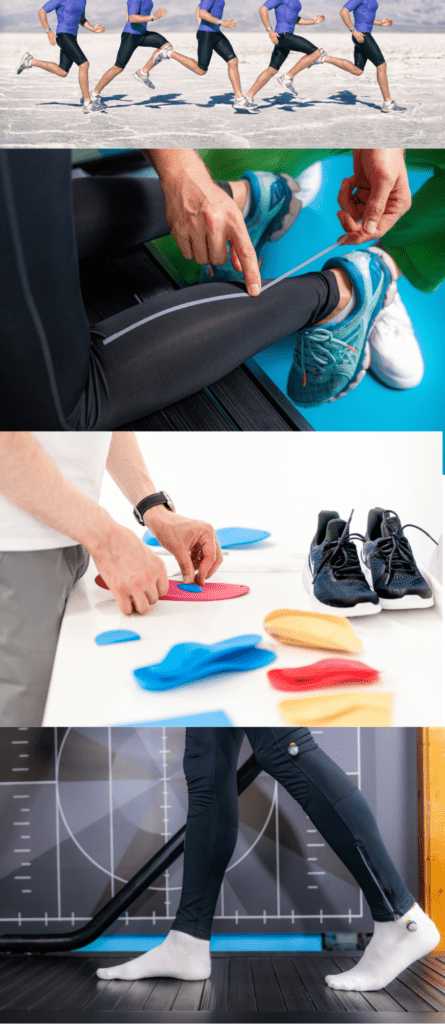Unveiling the Hidden Potential: Exploring the Benefits of Biomechanical Assessment
In the realm of health, fitness, and sports performance, the quest for optimization is unending. Imagine having the ability to unlock your body’s hidden potential, enhance your athletic prowess, and prevent injuries before they even occur. This is where the remarkable concept of biomechanical assessment comes into play. In this article, we’ll delve into the world of biomechanical assessment, unravel its significance, and shed light on the incredible benefits it offers.
What is Biomechanical Assessment?
At its core, a biomechanical assessment is a comprehensive evaluation that examines the mechanical forces and interactions within the human body during movement. This intricate analysis involves observing joint angles, muscle activations, posture, and gait patterns to understand how your body functions biomechanically.
Benefits of Biomechanical Assessment:
Personalized Training Optimization:
Biomechanical assessment provides a personalized roadmap to supercharge your training regimen. By identifying movement inefficiencies or imbalances, experts can tailor your exercises to target specific muscle groups, enhancing your workout efficiency and yielding better results in less time.
Injury Prevention and Management:
Prevention is the cornerstone of a long-lasting fitness journey. A biomechanical assessment can pinpoint potential areas of vulnerability or improper movement that may lead to injuries. Armed with this knowledge, you can take proactive measures to address these issues, ensuring a reduced risk of injuries and maintaining your progress.
Enhanced Performance:
Whether you’re a professional athlete or a weekend warrior, optimal biomechanics can significantly elevate your performance. By fine-tuning your movement patterns, you can increase power output, agility, and overall efficiency in your chosen sport or activity.
Rehabilitation Guidance:
Biomechanical assessments play a pivotal role in injury rehabilitation. For those on the path to recovery, understanding how your body moves can aid therapists in designing tailored rehabilitation exercises that accelerate healing and restore proper function.
Everyday Well-being:
Biomechanics isn’t limited to sports; it’s a fundamental aspect of everyday movement. Improving your body mechanics through assessment can alleviate discomfort in daily activities, promoting better posture, reducing strain, and enhancing your overall quality of life.


Examples of Biomechanical Assessment Tests:
Gait Analysis:
Gait analysis is a fundamental component of biomechanical assessment. It involves analyzing your walking or running pattern to identify any irregularities in your stride, foot placement, or alignment. This insight is invaluable for athletes and individuals alike, as it can lead to corrections that improve efficiency, reduce fatigue, and prevent injuries.
Functional Movement Screening:
FMS evaluates your body’s fundamental movement patterns, such as squatting, lunging, and twisting. By assessing these movements, experts can detect imbalances or limitations that might hinder your performance or predispose you to injuries. FMS guides the design of corrective exercises tailored to your unique needs.
Joint Range of Motion (ROM) Assessment:
This assessment measures the range through which your joints can move. It helps pinpoint restrictions or excesses in joint motion that may impact your movements or lead to discomfort. Addressing these limitations can enhance your overall mobility and reduce the risk of strain.
Muscle Activation Testing:
Muscle activation tests involve studying how effectively specific muscles engage during various movements. Identifying underactive or overactive muscles enables professionals to create targeted exercises that optimize muscle function, improve coordination, and enhance performance.
Posture Analysis:
Posture assessment examines the alignment of your body while stationary or during movement. Poor posture can lead to a host of issues, from muscle imbalances to joint strain. A biomechanical analysis of your posture guides interventions to promote better alignment and alleviate related discomfort.
Orthotic Assessment:
Diagnosis of foot, ankle and lower leg disorders and issues may lead to a recommendation of orthotics. A targeted correction through prescription orthotics (like insoles) may be needed to allow these disorders to be corrected and any issues to be addressed to stop further compensation that will be occurring in the joints and soft tissue elsewhere.
Conclusion
In a world driven by optimization and well-being, the benefits of biomechanical assessment are too valuable to ignore. By unravelling the intricate dance of your body’s mechanics, this assessment empowers you to fine-tune your training, prevent injuries, boost performance, and foster a healthier lifestyle. Embrace the power of biomechanical assessment, and embark on a journey to discover the hidden potential within yourself. Your body will thank you for it.

